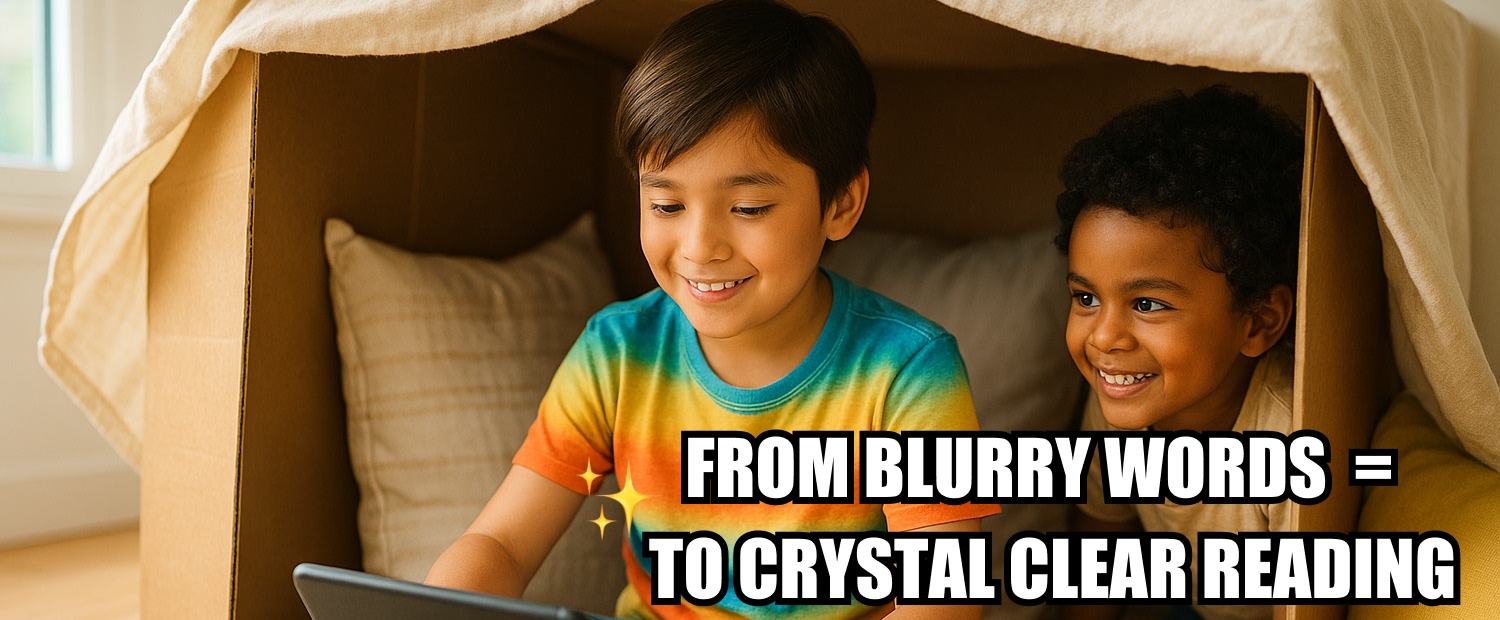Summary: What You’ll Learn in This Article

- Why text formatting matters for dyslexic readers
- How color, spacing, and visual focus improve comfort and fluency
- The Science of Reading on reducing cognitive load
- KOBI tools that make text more accessible (Magic Finger, Kobification™, Readability)
- Practical tips parents can try right away
Why Reading Can Feel Like Climbing a Wall
For children with dyslexia, letters sometimes blur, swap, or crowd together.
It’s not that they don’t understand the story – it’s that the page feels like a puzzle.
Tiny changes in how text looks can make a big difference. With the right adjustments, words stop “jumping around” and reading feels less like a struggle, more like discovery.

Why Visual Supports Matter: Science Says So
Research on dyslexia and reading fluency shows:
- Visual crowding increases errors – spacing helps readers track letters and words (Zorzi et al., 2012).
- Color overlays and background choices reduce visual stress, making text easier to follow (Wilkins, 2003).
- Focus tracking (like finger-guided reading) improves accuracy and pace.
The Science of Reading reminds us that decoding is only part of the process – comfort and focus are equally important.

How KOBI Makes Reading Friendlier for Dyslexic Learners
Step 1: Stay on Track With Magic Finger
Kids can trace each word with their finger while KOBI highlights it in real time. Focus stays sharp, eyes don’t wander, and confidence grows with every line.
Step 2: Decode Patterns With Kobification
Color-coded rules help children spot confusing letters and tricky sounds (like b/d or sh). Instead of guessing, kids get clear visual cues that make decoding easier.
Step 3: Adjust Readability for Comfort
Parents can change font size, line spacing, or even background color. Small tweaks remove distractions and give every child their best-fit reading setup.
Step 4: Personalize the Page
Together, these tools reshape any book into something approachable and child-friendly. The page finally feels like it belongs to them, not against them.
Tips for Parents: Simple Tweaks That Help at Home
- Try tinted backgrounds: Some kids prefer cream, pastel blue, or sepia.
- Space it out: Wider gaps between lines reduce eye strain.
- Focus the flow: Use a ruler, bookmark, or KOBI’s Magic Finger to track.
- Let your child choose: Involving them in adjustments builds ownership and comfort.
Why Homeschoolers Love KOBI for Dyslexia-Friendly Reading
- Adapts every book to each child’s needs
- Makes reading less stressful with simple visual changes
- Helps kids stay engaged without constant parent correction
- Builds confidence step by step

Reading Shouldn’t Hurt the Eyes
When the page feels friendlier, kids don’t just read more – they enjoy it more.
KOBI puts visual support tools right at their fingertips, so every child can experience books in a way that works for them.
Because reading success isn’t just about what they read – it’s about how they see it.
Key Takeaways
- Visual adjustments can dramatically ease reading for dyslexic learners
- Science shows color, spacing, and focus reduce reading strain
- KOBI’s Magic Finger, Kobification, and Readability make books more accessible
- Comfort leads to confidence – and confidence leads to progress


